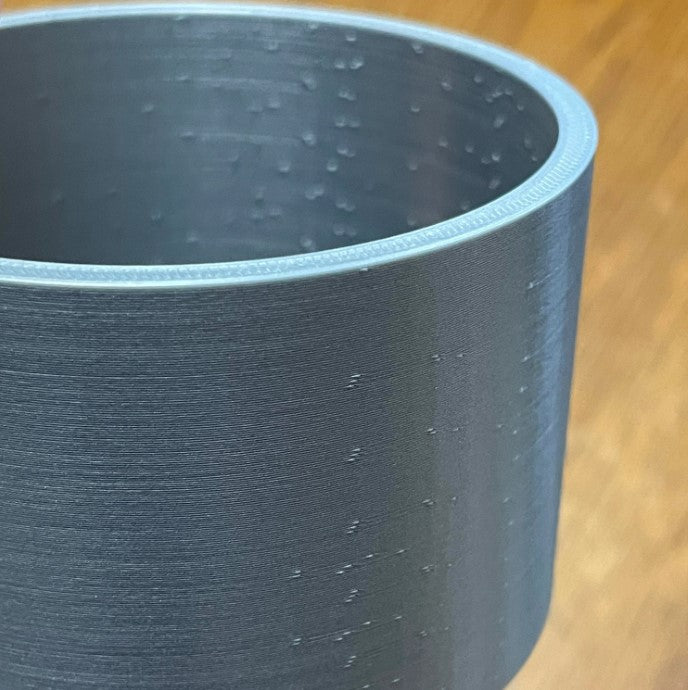
How to fix blobs and zits
Share
Blobs and zits are two common issues that can occur during the 3D printing process, particularly when printing complex parts with intricate details. Blobs are large, irregular bumps or lumps that appear on the surface of the print, while zits are small, pimple-like imperfections that can mar the surface finish of the print. Both issues present a problem for prints that have tight functional tolerances or that are meant to look good.

To diagnose and fix blobs and zits in a 3D printer, you can follow these steps:
- Check your filament quality: Poor quality filament can contribute to the formation of blobs and zits. Make sure that you're using high-quality filament that's free of contaminants and impurities. Even moisture in the filament can cause issues, so be sure that your filament is dry. Filament can be dried in an oven (careful that you don’t melt it or the spool!), so that is the first thing you can try.
- Adjust your extruder temperature: If your extruder temperature is too high, the filament will have a lower viscosity (more like water than honey) and create blobs and zits. Adjust the extruder temperature to the recommended temperature for the filament you're using.
- Adjust your retraction settings: Retraction refers to the process of pulling filament back into the nozzle when it's not in use. Improper retraction settings can cause filament to ooze out of the nozzle and create blobs and zits. Adjust your retraction settings to minimize filament oozing. In this case, you probably need to increase retraction distance and/or retraction speed. Careful though, because if you increase the retraction distance too much, the filament can get stuck in your heat break, and if you increase retraction speed too much, your extruder gear may strip the filament!
- Use a cooling fan: A cooling fan can help to rapidly cool the filament, reducing the likelihood of blobs and zits forming.
- Adjust your printing speed: Printing too quickly can cause your printer to lose extrusion accuracy and form blobs and zits. Slow down your printing speed to give the filament time to properly extrude and cool.
- Adjust the layer height: Printing with a layer height that's too large can create blobs and zits. Adjust the layer height to a smaller value to reduce hot end’s flow rate and the size of imperfections.
By following these steps, you can diagnose and fix blobs and zits in your 3D prints, to maximize the surface finish quality of your 3D prints! If you have any additional ideas, wisdom, or high-quality trolling, please drop that it in the comments!
